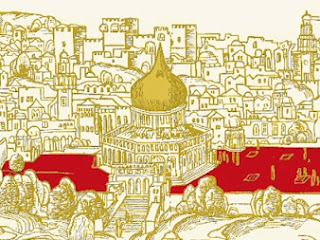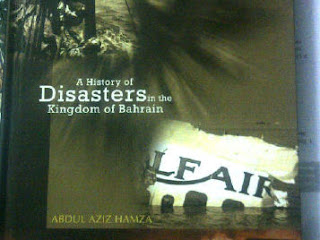I've always been a keen admirer of Jerusalem and after reading the book's blurb (see below), I knew this was one of the best books around. It did not disappoint.
His book "Stalin: The Court of the Red Tsar" won the History Book of the Year Prize at the British Book Awards. "Young Stalin" won the Costa Biography Award (UK), the LA Times Book Prize for Biography (US), Le Grand Prix de la Biographie Politique (France) and the Kreisky Prize for Political Literature (Austria). Montefiore’s books are published in over 35 languages. He is also the author of the novel, Sashenka. (For a more in-depth biography)
The book starts brilliantly with a prologue of the siege of Jerusalem of 70AD, by the Roman legions of (future-emperor) Titus against the Jewish rebels who occupied the city. The book officially begins with the Canaanite era of Palestine, going through the biblical eras of King David and Solomon. From the times of the Persians , Macedonians and Romans, to the time of the Byzantines, Arabs, Crusaders, Mamluk, Ottomans and British.
The most stunning thing about this book is that it is remarkably neutral (that's a feat when considering a controversial topic like Jerusalem's history). "Jerusalem, the Biography" is a fitting title since the book is written as a biography, through the people who made Jerusalem, starting with King David and ending with Barrack Obama, over a span of 3000 years. Each section is about a person who, made, destroyed, believed in, or fought for Jerusalem, some are ordinary people, some are monsters and dictators. There is massacre, siege, blood, violence, but also brilliant, so very much brilliant poetry.
The story of Jerusalem, is truly (as the author expressed) the story of the world, as well, of the Middle East, of religion, of holiness, of empire! The goosebumps I had when I read about some of of the greatest philosophers, the Arab historiographer "Ibn Khaldoon" in the book, about Suleiman the Magnificent, Caliph Muawiya, Saladin Dynasty, the entire Outremer era with a brilliant inclusion of William of Tyre, the Druze princess and angelic voiced Singer "Asmahan", the Hashemite (Sherifian) Dynasty, and most exciting to read was some poignant poetry by Nizar Qabbani.
This book should be the "must-read" guide for journalists and public figures in the Levant region, the book isn't just a simple retelling of facts, it is much more. With stories, anecdotes, and pages and pages of researched history you really feel as if you are stepping back through time and experiencing Jerusalem's history first hand.
And if the 650 pages of 3,000 years of Jerusalemite history are not enough, the book even has multiple photos, and multiple maps of Jerusalem's Old City, of all the quarters, throughout much of its history, right up to 1948. I strongly recommend this book to anyone with an interest in Jerusalem, or the Middle East in general. This has been one of the best books I've read
"Jerusalem is the universal city, the capital of two peoples, the shrine of three faiths; it is the prize of empires, the site of Judgement Day and the battlefield of today’s clash of civilizations. From King David to Barack Obama, from the birth of Judaism, Christianity and Islam to the Israel-Palestine conflict, this is the epic history of three thousand years of faith, slaughter, fanaticism and coexistence.This book was written by Simon Sebag Montefiore, his last name already being a significant part in Jerusalem's history, a Cambridge University alumni who studied history and is already well known throughout much of the literary world for his previous award-winning books, Catherine the Great & Potemkin which were shortlisted for the Samuel Johnson, Duff Cooper, and Marsh Biography prizes.
How did this small, remote town become the Holy City, the “center of the world” and now the key to peace in the Middle East? In a gripping narrative, Simon Sebag Montefiore reveals this ever-changing city in its many incarnations, bringing every epoch and character blazingly to life. Jerusalem’s biography is told through the wars, love affairs and revelations of the men and women—kings, empresses, prophets, poets, saints, conquerors and whores—who created, destroyed, chronicled and believed in Jerusalem. As well as the many ordinary Jerusalemites who have left their mark on the city, its cast varies from Solomon, Saladin and Suleiman the Magnificent to Cleopatra, Caligula and Churchill; from Abraham to Jesus and Muhammad; from the ancient world of Jezebel, Nebuchadnezzar, Herod and Nero to the modern times of the Kaiser, Disraeli, Mark Twain, Lincoln, Rasputin, Lawrence of Arabia and Moshe Dayan."
His book "Stalin: The Court of the Red Tsar" won the History Book of the Year Prize at the British Book Awards. "Young Stalin" won the Costa Biography Award (UK), the LA Times Book Prize for Biography (US), Le Grand Prix de la Biographie Politique (France) and the Kreisky Prize for Political Literature (Austria). Montefiore’s books are published in over 35 languages. He is also the author of the novel, Sashenka. (For a more in-depth biography)
The book starts brilliantly with a prologue of the siege of Jerusalem of 70AD, by the Roman legions of (future-emperor) Titus against the Jewish rebels who occupied the city. The book officially begins with the Canaanite era of Palestine, going through the biblical eras of King David and Solomon. From the times of the Persians , Macedonians and Romans, to the time of the Byzantines, Arabs, Crusaders, Mamluk, Ottomans and British.
| Simon Sebag Montefiore ©Hugo Burnand |
The story of Jerusalem, is truly (as the author expressed) the story of the world, as well, of the Middle East, of religion, of holiness, of empire! The goosebumps I had when I read about some of of the greatest philosophers, the Arab historiographer "Ibn Khaldoon" in the book, about Suleiman the Magnificent, Caliph Muawiya, Saladin Dynasty, the entire Outremer era with a brilliant inclusion of William of Tyre, the Druze princess and angelic voiced Singer "Asmahan", the Hashemite (Sherifian) Dynasty, and most exciting to read was some poignant poetry by Nizar Qabbani.
This book should be the "must-read" guide for journalists and public figures in the Levant region, the book isn't just a simple retelling of facts, it is much more. With stories, anecdotes, and pages and pages of researched history you really feel as if you are stepping back through time and experiencing Jerusalem's history first hand.
And if the 650 pages of 3,000 years of Jerusalemite history are not enough, the book even has multiple photos, and multiple maps of Jerusalem's Old City, of all the quarters, throughout much of its history, right up to 1948. I strongly recommend this book to anyone with an interest in Jerusalem, or the Middle East in general. This has been one of the best books I've read








